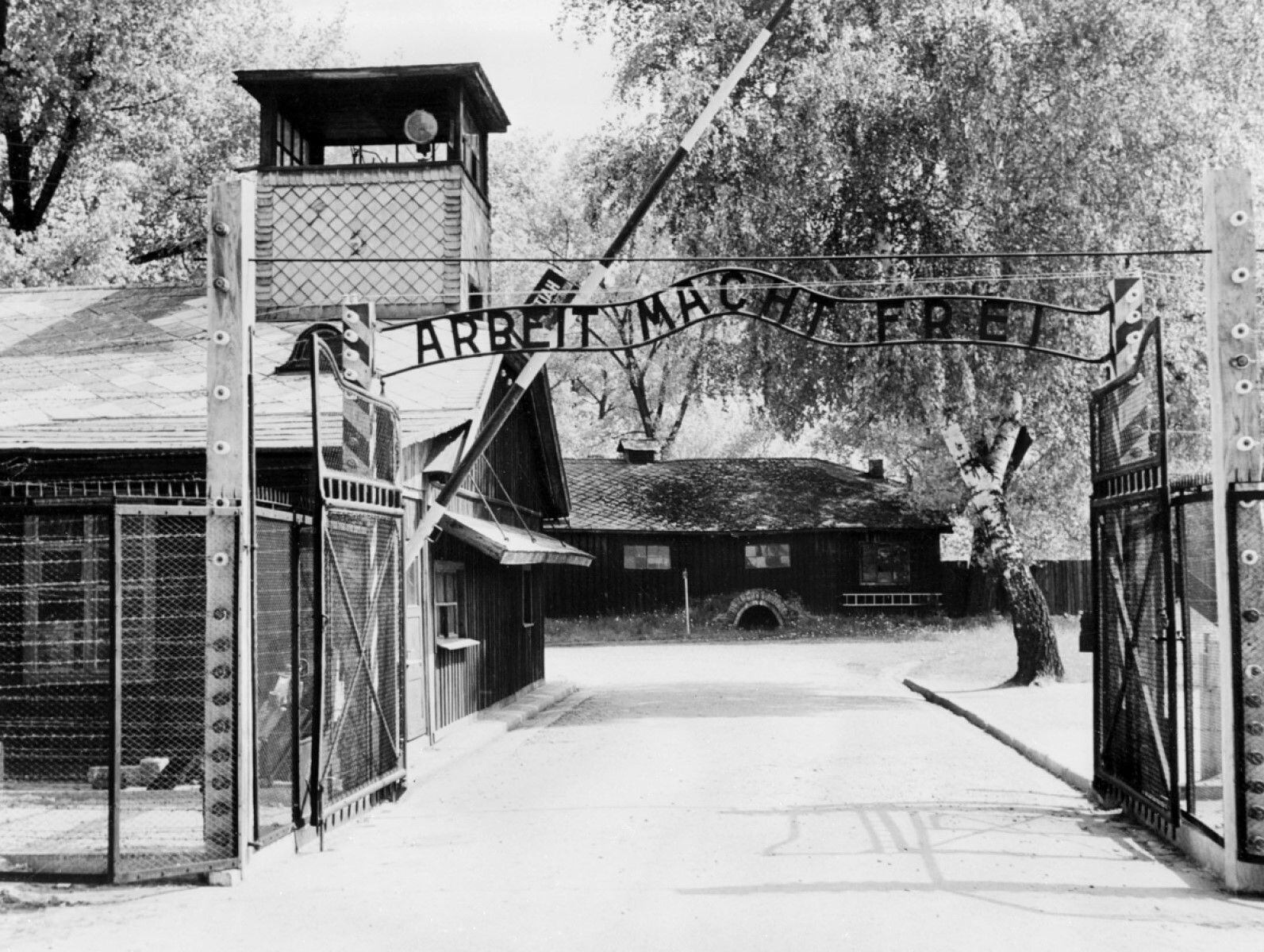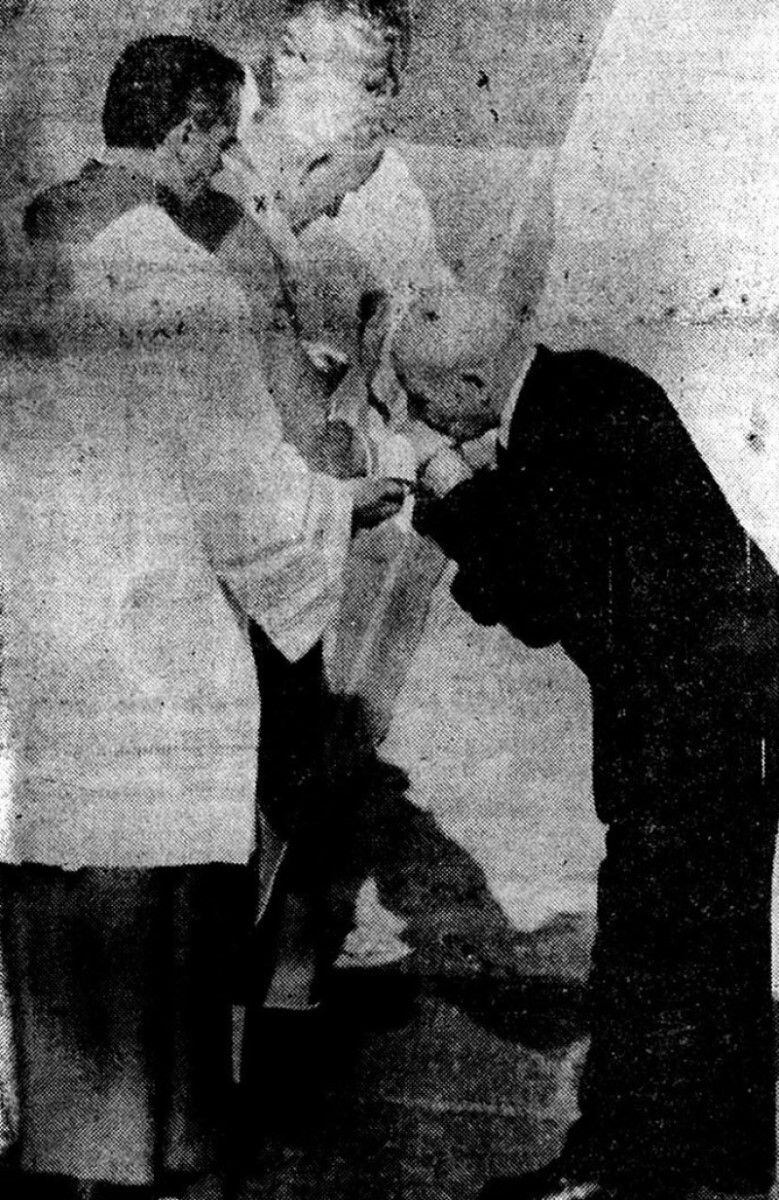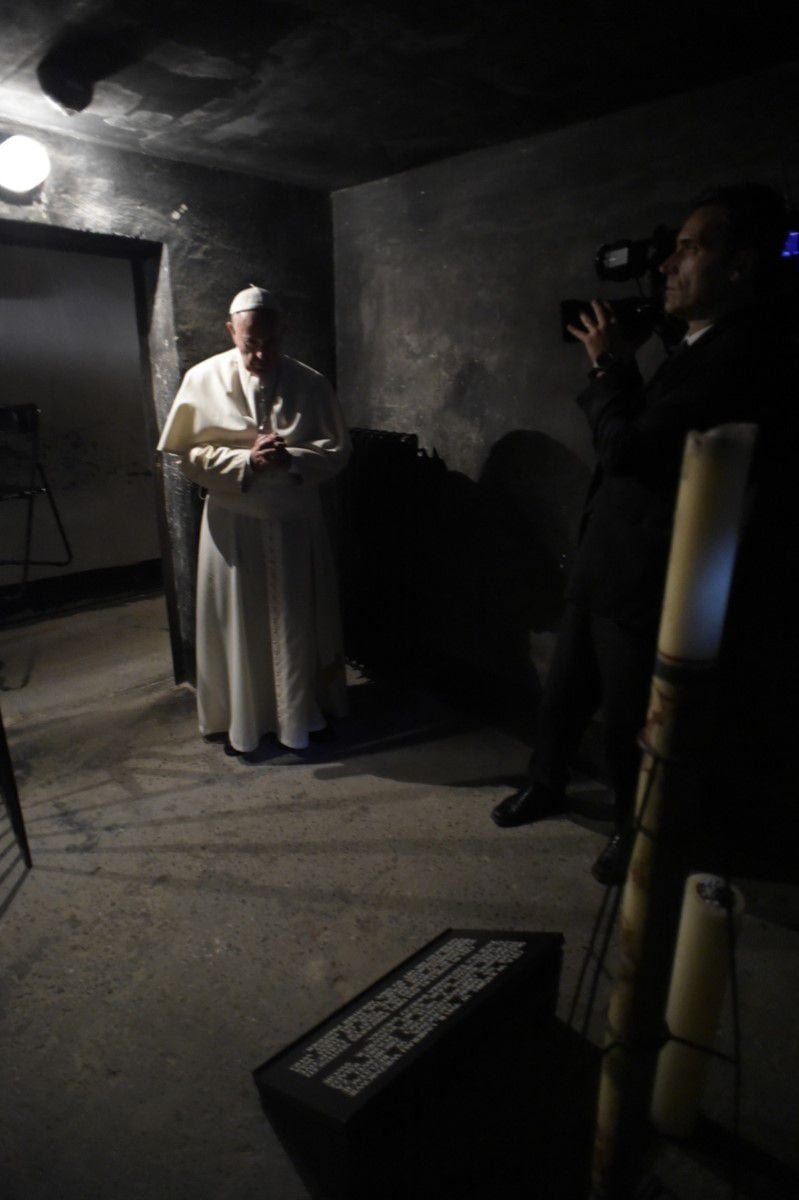Fifty years ago, the Supreme Pontiff made Maximilian Kolbe, who was interned in the Auschwitz (Oswiecim, in Polish) concentration camp, blessed.
Paul VI proclaimed Father Maximilian Kolbe as the first victim of the Nazi camps registered on the list of the blessed, in a solemn ceremony in St. Peter’s Basilica, in which Franciszek Gajowniczek, the man for whom Kolbe was exchanged, was present. to die.
The Pope, the first to officiate a beatification ceremony in the history of the Church, declared in a speech before the 25,000 faithful in attendance that Father Kolbe was “perhaps the brightest and most luminous figure to emerge from the darkness of the time. Nazi”.
Sobbing silently during many moments of the ceremony, and positioned near the altar, was Auschwitz prisoner number 5659, former Polish Army Sergeant Franciszek Gajowniczek, whom Father Kolbe volunteered to replace in the camp cells reserved for the sentenced to death.
Father Kolbe, known among Auschwitz prisoners until his death on August 14, 1941, as “our little father,” stepped forward from a line of inmates to replace Gajowniczek, who had been selected as one of the ten men who were to be executed in retaliation for the escape of a companion in misfortune.
The devoted priest asked to replace him because Gajowniczek was married with a son. When the Nazi officer asked him about the reasons for his offer, Father Kolbe replied: “Because I am a Catholic priest.” Three weeks later he was killed with an injection of carbolic acid, while lying naked in an underground cell.
Gajowniczek, who attended accompanied by a delegation from the Warsaw Government, was appointed to carry the holy hosts to the altar and put the sacred hosts in the hands of Paul VI at mass.
The former sergeant, then 70 years old, wept and raised a handkerchief to his eyes when the formal petition for the beatification of Father Kolbe was read in Polish, while a solemn hymn was sung by some 5,000 of his compatriots, coming from all over the world.
The Supreme Pontiff, who celebrated Mass together with Cardinal Wyszynski and the Archbishop of Krakow, Karol Wojtyla (future Pope John Paul II), hailed Father Kolbe in his presentation as “the humble and gentle Franciscan friar of incredible boldness.”
History of a beatification
In 1963, the Polish Cardinal Stefan Wyszynski (1901-1981) was the one who asked Pope Paul VI for the beatification of Kolbe. Then, in 1966, the bishops of Germany joined the request of the Poles, believing that this would be of great importance in the re-education of the Germans for world peace.
Kolbe was born in 1894 in Zdunska Wola, a Polish city that at that time belonged to the Russian Empire. In 1906 he experienced a vision of the Virgin Mary, prompting him to join the Franciscans. In 1912 he studied philosophy and theology in Rome and in 1917 he founded “The Knights of Mary Immaculate.”
Returning to his country, in 1939 he was arrested by the Gestapo, but later released. He then dedicated himself to giving refuge to the persecuted Jews. For this activity he was arrested again in 1941.
He was taken to Auschwitz, but even as a prisoner he served as a confessor and gave communion while he was alive.
Canonized in 1982
In Saint Peter’s Square, before 150 thousand people, John Paul II canonized Maximiliano Maria Kolbe, with the presence of 13 thousand Polish pilgrims.
At 82 years old, Franciszek Gajowniczek was also present. Also, Monsignor Konrad Sweda, a companion of Father Kolbe in Auschwitz, participated in the ceremony.
Referring to the death of Kolbe, the Pope spoke about “the immense hecatomb that meant the presence of so many innocents in the concentration camps during the Second World War.”
Pope Francis in Kolbe’s cell
On July 29, 2016, just as John Paul II and Benedict XVI had done before, Francis stepped foot in the former Auschwitz concentration camp in Poland.
Francisco entered on foot, crossing the entrance arch in which the ironic phrase can be read: “Work will set you free.”
He sat on a bench to pray and then continued his tour. He reached the courtyard where those sentenced to death were called and where in 1941 Maximilian Kolbe offered his life for another prisoner.
Finally, he went down to Kolbe’s cell and sat in the gloom for ten minutes, in total silence.
.

:quality(75)/cloudfront-us-east-1.images.arcpublishing.com/elcomercio/45CAD7CIUJCLFD5ICMMMG7IZXI.jpg)






:quality(75)/cloudfront-us-east-1.images.arcpublishing.com/elcomercio/JE5D2BSYENDC7LIFHKO4QGWR4Y.jpg)
:quality(75)/cloudfront-us-east-1.images.arcpublishing.com/elcomercio/UHH47E2VSRDY5LUVGO5UAYIFZU.jpg)

